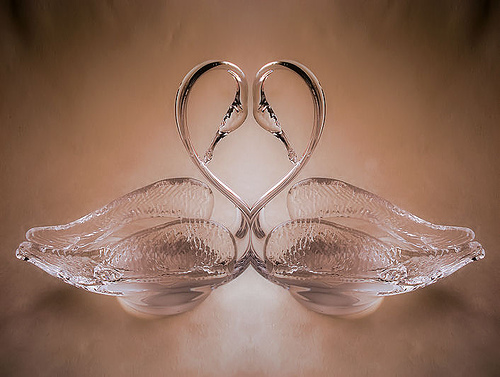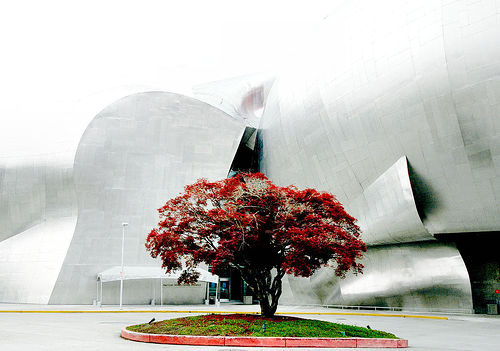
Photography design principles are simply some widely accepted guidelines for composing a photograph that add to its impact and make it all the more pleasing and interesting to the human eye. By employing these principles and using your creative imagination, you can make some highly professional compositions. The photographic design principles are equally important for professional as well as amateur photographers because they are the foundation to help you learn photographic composition and enhance interest in the photograph. Let’s take a look at the 15 design principles of photography and how they impact your photographs.
-
Rhythm
The primary characteristic of rhythm is its predictability and order. For example, day and night and the pattern of seasons are predictable and follow a particular movement along a connected path to exhibit a sense of rhythm. Rhythm is as important in photography as it is in music. Music when not in rhythm can be categorized as noise. But when it attains a timed beat at regular intervals, it turns pleasant to the ears.
Similarly, rhythm in photography renders a pleasant sensation to the eyes. Rhythm can be classified into attention rhythm (elements regularly alternating with each other), progressive rhythm (change in shape of elements at regular intervals) or rhythm sensation (change in elements’ color, size and shape at regular intervals) depending on the way and rate at which the photographic elements undergo repetition.
-
Harmony
Harmony is a pleasing co-existence of photographic elements where none of the element is dominant. This arrangement of similar elements in a photographic composition render a visual satisfaction because the uniform relationship between the elements provide a sense of unity. In order to make every element indulge in a complimentary relationship with each other, the principle of harmony takes help of patterns, lines, textures and shapes that either repeat rhythmically or randomly to attain an interesting arrangement. All these elements in the same image fall together in the composition to represent harmony in the photograph.
-
Symmetry
Symmetry in a photograph simply means that the visual weight of the photographic elements are equally distributed on both the sides of the imaginary central axis in a photograph (bilateral symmetry). Optionally, you can arrange the weight of the elements around a central point to create a radial symmetry. Symmetry can be further classified into two categories — reflective symmetry and approximate symmetry.
Reflective symmetry (also called pure symmetry) occurs when you capture an image with it’s mirror reflection, having identical elements on both sides of the central axis. To obtain an approximate symmetry, capture a subject which has different, yet approximately similar elements on each side of the central axis.
-
Balance
Balance here means that the placement of the photographic elements are done in such a way that they create a visual equilibrium. Balance can be symmetrical (main subject in the absolute center) or asymmetrical (as in the case of golden ratio or rule of thirds where the subject is not in the center).
-
Proportion
Photographic proportion refers to the relative difference between the sizes of the elements in a photograph. Proportion provides different levels of interest to the photograph. For example, a huge architectural building is a lot more in scale than a human figure. Thus, both the elements (the building and the person ) are unequally proportioned, yet render an interest to the photograph. On the other hand, elements that are in equal scale with each other seem even and friendly.
-
Emphasis
Emphasis simply is the dominating object or any object which acts as the center of attraction in a photograph. It refers to that particular point / element in a photographic composition which grabs more attention as compared to the other parts. Emphasis in a photograph is usually limited to one but sometimes may incorporate an additional, secondary emphasis as well. It acts as a break to the regular pattern of movement and rhythm, resulting in a visual surprise that instantly attracts the viewer’s eyes.
Emphasis varies from image to image. In an image having repetitive elements arranged in symmetry, each element calls for attention and the emphasis is distributed evenly. On the other hand, in an image with high level of contrast, the emphasis will lie on the element that stands out from the crowd (for example, in the image given below, the red door draws emphasis because it is visually standing out).
-
Contrast
Technically contrast is the difference between the highlights and the shadows. But here, contrast has been used in a metaphorical sense. It may refer to the contrast between colors, contrast between two abstracts like spirituality and fierceness etc. Contrast is a very important principle in the photographic design because it adds a high level of interest to the photograph and render different moods to it.
Contrast can be achieved by juxtaposing any two or more elements having distinct visual properties. Lines (thick and bold against thin and delicate), size (big against small), color ( use of opposing colors), value(difference in the shades and tones), texture (smooth surface against a textured part) and direction (aligned elements pointing in different directions) are some examples of elements that can help to achieve a contrast.
-
Unity
Unity is the overall arrangement of all the photographic elements in a regular and consistent manner; so that they compliment each other and work in unison to portray that everything falls into its place. The most important factor that unity relies on, is the uniformity in the fundamental structure of the photograph — the pattern, form, size and color. To sum up, when all the above given principles of design work in perfect synchronization, unity is achieved. If anything looks out of place or “does not belong” to the picture then unity is missing.
Every photographic composition requires precise planning and cogitation to attract and sustain a viewer’s interest. Photographic design principles make this task of photographic planning a lot easier for the photographers. Though many photographer’s break these principles and still come out with extraordinary pictures, the first step would be to clearly understand and practice these laws. Keep watching this space for Part II of this post for the seven remaining tips.
Update: Check out remaining seven design principles for photography in Photography Principles From Design II, Part II of this series.









